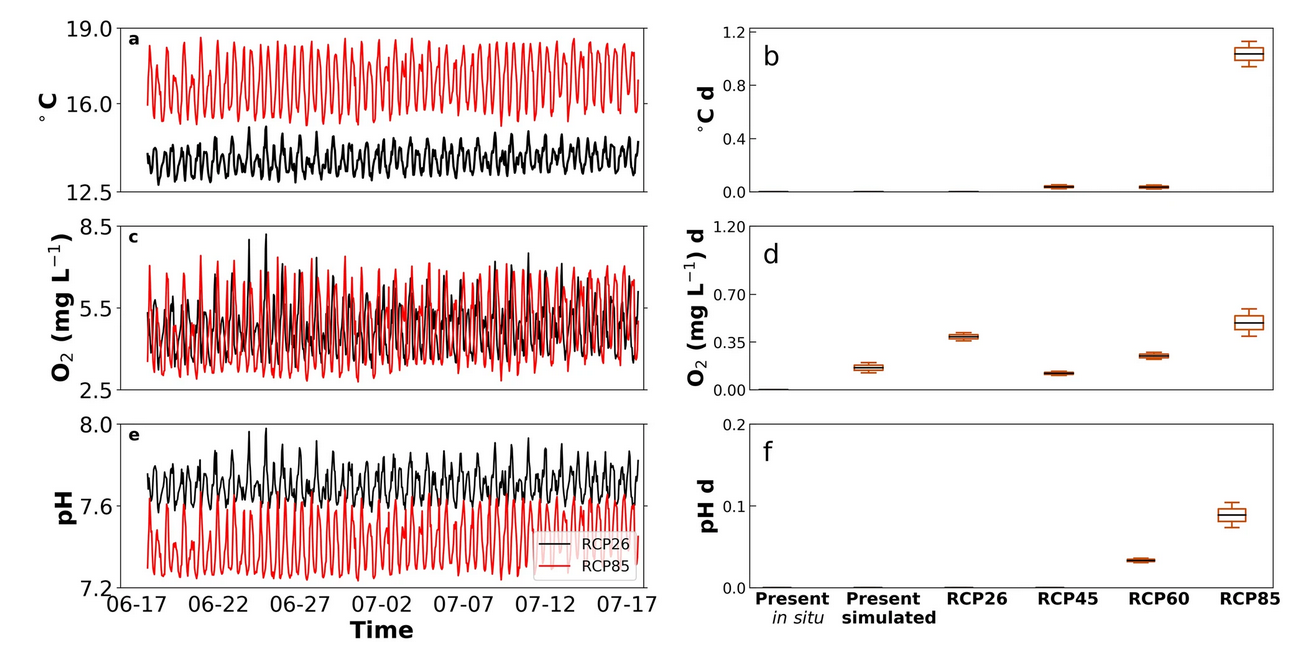Climate change is expected to warm, deoxygenate, and acidify ocean waters. Global climate models (GCMs) predict future conditions at large spatial scales, and these predictions are then often used to parameterize laboratory experiments designed to assess biological and ecological responses to future change. However, nearshore ecosystems are affected by a range of physical processes such as tides, local winds, and surface and internal waves, causing local variability in conditions that often exceeds global climate models. Predictions of future climatic conditions at local scales, the most relevant to ecological responses, are largely lacking.
We developed a 2D implementation of the Regional Ocean Modeling System (ROMS) to downscale global climate predictions across all Representative Concentration Pathway (RCP) scenarios to smaller spatial scales, in this case the scale of a temperate reef in the northeastern Pacific. To assess the potential biological impacts of local climate variability, we then used the results from different climate scenarios to estimate how climate change may affect the survival, growth, and fertilization of a representative marine benthic invertebrate, the red abalone Haliotis rufescens, to a highly varying multi-stressor environment. More info: model simulation and analysis
We found that high frequency variability in temperature, dissolved oxygen (DO), and pH increases as pCO2 increases in the atmosphere. Extreme temperature and pH conditions are generally not expected until RCP 4.5 or greater, while frequent exposure to low DO is already occurring. In the nearshore environment simulation, strong RCP scenarios can affect red abalone growth as well as reduce fertilization during extreme conditions when compared to global scale simulations.
